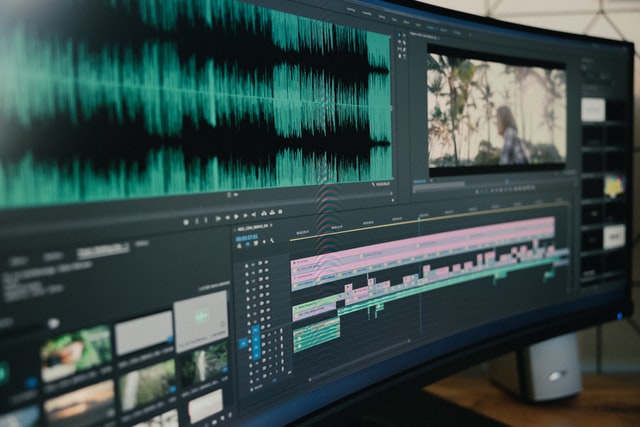
The importance of close captioning
What Is Closed Captioning?
The term "closed captioning" refers to any method of displaying text on a television, video screen or other visual display to provide additional or interpretive information. This can include either a transcription of the dialogue or descriptions of non-dialogue audio content as well as non-verbal information such as music cues, sound effects and other relevant audio information. The FCC requires that closed captions be available on certain types of television programming, especially news and entertainment programming that is not live. Captions are also used in a variety of applications outside of television programming, including movie theaters, public venues, home videos, DVDs and other forms of digital presentations.
For people who are deaf or hard-of-hearing, closed captions provide access to television programming that would otherwise be completely inaccessible. Closed captions also benefit people learning to read, people learning English as a second language, and anyone who wants to improve their reading skills. Depending on the environment in which a program is being viewed, closed captions may make it possible for more than one person to enjoy the same program at the same time. For example, if someone is trying to watch TV while another person is asleep in the same room, automatic captioning allows TV viewing without disturbing the other person's sleep.

What is the difference between closed captions and subtitles?
Closed captions and subtitles are both text-based means of providing audio information in a video format. The main difference is that closed captioning is designed for the hearing-impaired, while subtitles are designed for those who understand the audio but need a textual reference of some kind. In terms of production, closed captioning is more complex because it has to convey not only spoken words but also sound effects and speaker identification. Subtitles simply relay the dialogue from one language to another, or from spoken word to text.
The term "closed captions" refers to both the process of creating captions and the result—a set of captions that can be turned on or off as desired. Open captions are always visible, as opposed to closed captions, which require activation. The closed caption file format contains text and timing data that provide instructions for displaying text at specific times during a presentation. Files may be created in-house (as is often done for training or educational videos), or they may be outsourced to professionals.
Why Quality Matters In Closed Captioning And Video Captions?
When it comes to captions, there are a number of reasons why quality matters. If you don't have quality, your customers will notice. And if they notice your captions, they're going to lose trust in the brand that hired you. That's why it's so important for companies to ensure that their closed captioning and video captions are high quality and that they're consistent from one project to the next. You may not have thought about it before, but when you’re looking for a reliable company to hire, you want to make sure that they can deliver on their promises.
There are many things that go into the quality of captioning services, including:
Spelling and Grammar: The first thing people notice when they watch a video with captions is how well they were written. If they don’t make sense or have typos, then it will be hard for your audience to take them seriously. This is especially true if you’re using subtitles in your videos as an educational tool or if you want to promote your brand and products.
Accuracy: Accuracy is another important factor when it comes to captioning services and video subtitling. When someone watches a video with subtitles or closed captions, they expect that everything they see on the screen is accurate and true. If there are any mistakes or inconsistencies in what’s being said, then viewers will feel cheated out of their money and time spent watching your content.
Here are four reasons why Close Captions are important:
1. Quality Captions Make Content More Accessible
When you're creating content for your customers or clients, you want it to be accessible for everyone who wants to consume it. Videos with subtitles make this possible because people who are deaf or hard of hearing can still access the information presented in a video by simply reading what's being said on screen while watching it play out before them.
This makes videos more accessible overall and allows everyone to get the most out of their content no matter who they are or where they're located (or how much time they have).
2. High-Quality Captions Help You Stay Competitive
Quality captions are vital for staying competitive in today's market because consumers expect high standards from brand which are engaged in a very competitive marketplace.
3. Captioning is a legal requirement for many industries
The Americans with Disabilities Act (ADA) and Section 508 require all businesses — including government, education and healthcare — to provide equal access to their digital services. This includes providing closed captioning on all videos. If your content doesn't have captions, you're not in compliance with these laws.
4.Captions drive engagement
YouTube reported that video accessibility with closed captions left longer comments and spent more time on the site. Having captions also helped people find relevant videos they wanted to watch, which led to more views and longer viewing sessions overall.
Conclusion
If you are looking for a way to expand your business by tapping into the growing market of video content, consider adding closed captioning to your repertoire. It is a cost-effective way to gain viewers regardless of accent or physical ability and can be used in a variety of contexts.
Closed captioning has been around for quite a while, but it is only recently that it is starting to become more commonplace. While closed captioning technology has improved significantly over time, there is still room for improvement. But the future seems bright, and we should be seeing more and more video content being made available with closed captioning over the next decade.







